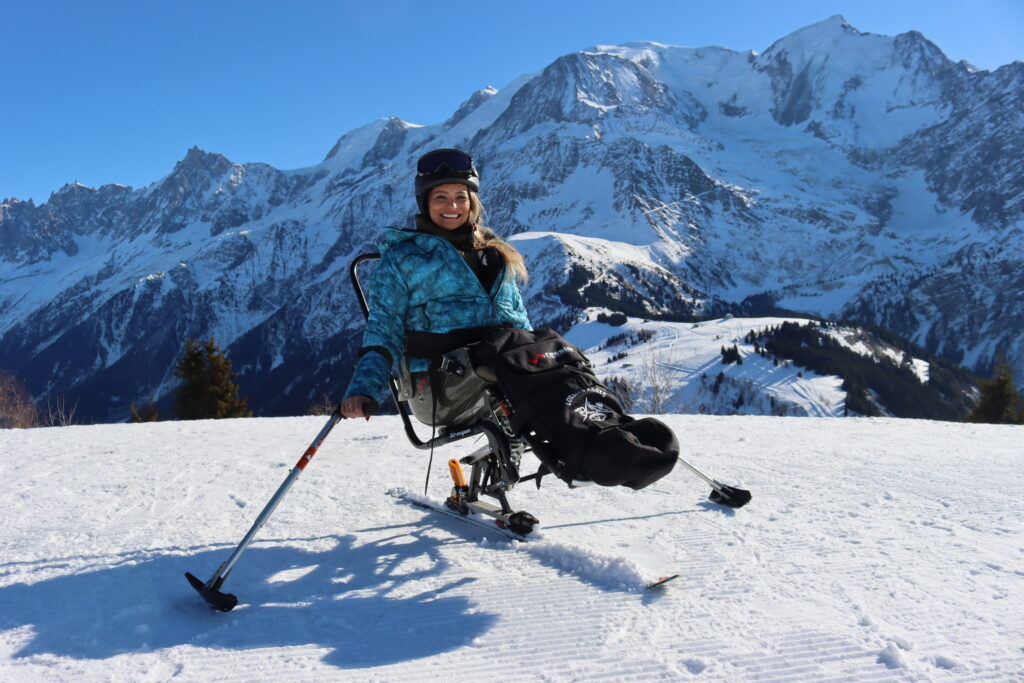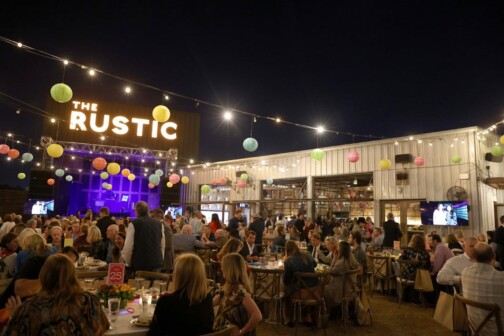Peruvian influencer Marcela Marañon doesn’t think she started living until after she became paralyzed.
Marañon grew up in the Peruvian capital of Lima, but moved to Plano after high school to learn English. She enrolled in Collin County Community College, got a job at a pizza shop, and bought a car.
On September 2, 2002, she and her boyfriend got in a car wreck on the Dallas North Tollway. “It was a very horrible accident,” she says. At 20, Marañon became an above-the-knee amputee. She was paralyzed from the waist down. Her boyfriend died.
She fell into a deep depression. Marañon wanted her boyfriend back. She had always been an adventurous, independent, and social person, but now she didn’t know how to live in her new reality.
“I was born healthy. I grew up most of my life healthy,” she says. “And then an accident just changed my life and my physical abilities. And I couldn’t understand that.”
@thejourneyofabravewoman Exercises you can do to keep or gain core strength #learnontiktok #tiktokdisability #adaptiveworkout #adaptiveathlete #gymworkout #fitness
♬ Send It - Steve Aoki & Will Sparks
With encouragement from her friends and family, Marañon began living her life again. She started posting about her experiences on social media in 2017. On her pages, she shares videos of her life with disabilities, like cooking in an exoskeleton, working out, riding her retrofitted Ryker, and traveling and showcasing wheelchair accessibility (or lack thereof) around the globe.
Marañon now has more than 250,000 followers and almost 4 million likes on TikTok, plus more than 400,000 followers on Instagram. She’s skied in the French Alps. In 2020, she climbed Mt. Kilimanjaro and founded The Journey of a Brave Woman Shop, an online store that supports wheelchair accessibility across the world. TikTok named her a 2021 Latinx Trailblazer, and Marañon recently joined Clinique’s “Face of Adventure” campaign.
We spoke with Marañon about life after her accident, traveling the world, and becoming a disability advocate.
You’ve talked openly about your struggle to understand your disability. Can you tell me more about that?
Not only was accepting my new life as a disabled woman a difficult process, but also not understanding the language at the time. Because I just moved from Peru to Dallas to study English. And then a year later, the accident happened, And I was like, okay, so I don’t know what the doctors are saying. I don’t know what a spinal-cord injury (meant). I don’t know how I’m gonna do life in a wheelchair.
You’ve said you took your life before for granted. What do you mean?
Since we’re little, we are programmed to think that being disabled is such a bad thing. It’s a curse, or whatever. And that’s how we grow up. And then we started understanding about disability when we are maybe going through a life-changing situation like mine, or we have a friend who’s disabled, or working in a place where you work with a lot of disabled people, and then you start understanding that it’s perfectly okay to be disabled. And it’s perfectly okay to live your life with a disability. And there is nothing wrong with that.
@thejourneyofabravewoman I love sharing my happy moments with you ❤️ #learnontiktok #rewalk #walking
♬ drivers license - Olivia Rodrigo
How did your family help you to live more independently?
They never treated me as a disabled woman. Like my mom. If you meet my mom, it’s like, “she can do it.” It’s not like, “oh, I help you.” No. Since the beginning of my accident, she was like, “no, she can do it.” She never had in her mind that “Oh, poor my daughter, she’s disabled,” you know? “I know that she suffered.”
I think that being around that mentality, you know, like having all these people treating me like I’ll be okay and “yeah, we know that she’s disabled now, but she’s gonna work for it”—I think that that was what has helped me a lot.
Not long after your accident, your mother sent you on trip to visit family. Was that when you began traveling?
I was like, “I cannot travel. I am in a wheelchair. I am disabled. I cannot travel alone. How am I gonna board the airplane.” Right? And my mom says, “you can do it.” My mom bought my ticket to Tampa. It was a year after my accident. And I flew by myself. Most people do not do that, you know? Then I was like, “oh, okay, I kind of like it.”
@thejourneyofabravewoman What happens when the world is not accessible for wheelchair users #learnontiktok #wheelchairaccessible #foryou #adventure
♬ original sound - Marcela Marañon
Why did you start posting videos on social media?
I did it to help the community. Because I had the opportunity to travel alone and discover the world and explore the world. This is why I said, “well, I’m gonna use my social media to bring awareness about wheelchair accessibility because I am in a wheelchair and make the community aware of if they want to travel the world, this is what they will have to see or they will have to experience.” So, it’s mostly awareness and help the community, but it grew so much that now I’m not only helping the community, I’m helping everyone.
Tell me about your Mt. Kilimanjaro trip.
Kilimanjaro was an amazing experience. I never thought that I would be on the tallest mountain of Africa in a wheelchair. I still cannot believe it. I had a great time. Great lessons. Every time I think about it, I smile and say, “Wow, I can’t believe I was able to conquer that mountain.”
@thejourneyofabravewoman Climbing Mt. Kilimanjaro #tiktokpartner #learnontiktok #traveler #hiker #adventuretime
♬ Get On It - Chris Alan Lee
So how did you climb it?
I went with an organization, and they helped me. They had a special chair that climbs mountains. And so, I had my team of porters and they helped me. So actually, we all did it together.
What is your goal with sharing your story online?
To share with the world a message that “hey, you know what? Support us. Help us make the world an accessible place for all.” Also, to give information to the community about accessibility and accessible places. Another thing is like, “Hey, I know we live with this disability, but we can still live life to the fullest. We can still travel and explore the world.”
Author






